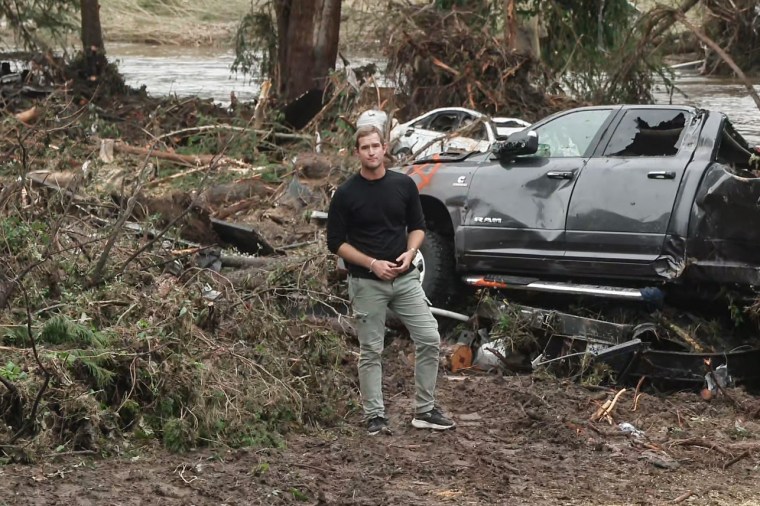Growing up near the Guadalupe River in Kerrville, Texas, could sometimes feel like living near a volcano.
I was born two blocks away from the gorgeous river that flows from the Hill Country to the Gulf of Mexico, just one year before the devastating and deadly 1987 flash flood, often described around town as the “big one.”
As a boy, whenever flash floods inevitably struck our area, which could be every few years, my dad would take me down to the overflowing Guadalupe. From a safe distance, we would watch the power of the water and understand the strength and danger behind it. Living near this jewel of the Hill Country was a blessing, but it came with the knowledge that, like a volcano, when it erupted, things could get incredibly bad, incredibly fast.
For Kerrville locals, the power of the Guadalupe was never in doubt. And yet, what happened in the early hours on Friday, when catastrophic flooding struck with a surge topping 20 feet, soon became a perfect storm turned into a once-in-a-lifetime tragedy.
I first heard about the flood on Friday morning, when I woke up in LA to a half-dozen text messages from all over the country asking if my family was safe. I later learned that at around 5 a.m., my mother had evacuated her home on the river, where she had retired, while my stepfather helped multiple families and RVs move out of the way before the powerful floods washed them away.
The entire day was a gut-wrenching waiting game because we had friends who were personally affected by the floods, and nobody knew how they were doing. Communication was limited, and it felt like a heartbreaking nightmare playing out over 24 hours.

Having since moved to the West Coast, I rarely report on Texas. However, I knew I had to get to my hometown because there is no place I would rather be than chronicling every step of this tragedy and telling the stories along the way.
As we enter Day 4 of this unimaginable situation, where the death toll has risen to at least 90 across six damaged counties, I am struck by this incredible mix of grief and grit. And while I know that this community will band together to move forward from this, this level of collective pain is something I have never experienced before.
The nature of this job throws you into disasters all over the world, and in each instance, there is a layer of separation. But when it hits your home, it’s like seeing tragedy for the first time.
I’m fortunate to say that my family is safe, but we have friends who this has personally impacted, and those in my community are sorting through the unfathomable. As we continue to cover this story, my purpose here is to connect with the people who are trying to make sense of what happened, to share the stories of resilient residents coming together, and to ask questions so this will not happen again.
As a kid growing up in Kerrville, you learn different ways to help your community, such as being in the Boy Scouts or lending a hand where needed. For my grandfather, it was helping rescue kids in 1987 during the last flooding tragedy.
Now, for me as an adult, it’s coming back to Kerrville to stay in my mother’s home to cover this flood that’s become unlike anything we have ever seen before, and hopefully, nothing we ever see again.
